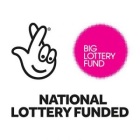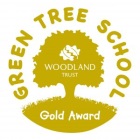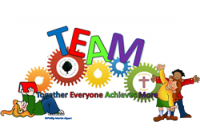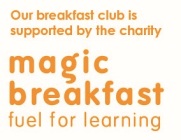Read, Write, Inc. Phonics
Read, Write, Inc Phonics is a whole school initiative which we have adopted at our school. It is an inclusive literacy programme for all children learning to read. It is aimed at children reading at Level 2b or below and teaches synthetic phonics. Children learn the 44 common sounds in the English language and how to blend them to read and spell. The scheme includes both a reading and a writing focus.
Reading is the key that unlocks the whole curriculum so the ability to efficiently decode is essential. The R.W.I sessions are expected to occur each day with no exceptions, as the continuity and pace of the programme is key to accelerating the progress of children’s reading development.
Aims and Objectives.
To teach children to:
- Apply the skill of blending phonemes in order to read words.
- Segment words into their constituent phonemes in order to spell words.
- Learn that blending and segmenting words are reversible processes.
- Read high frequency words that do not conform to regular phonic patterns.
- Read texts and words that are within their phonic capabilities as early as possible.
- Decode texts effortlessly so all their resources can be used to comprehend what they read.
- Spell effortlessly so that all their resources can be directed towards composing their writing.
Teaching and Learning Style
This is based on the 5 Ps.
Praise – Children learn quickly in a positive climate.
Pace – Good pace is essential to the lesson.
Purpose – Every part of the lesson has a specific purpose.
Passion – This is a very prescriptive programme. It is the energy, enthusiasm and passion that teachers put into the lesson that bring the teaching and learning to life!
Participation – A strong feature of R.W.I. lessons is partner work and the partners ‘teaching’ each other (based on research which states that we learn 70% of what we talk about with our partner and 90% of what we teach).
It is important to remember to never give up! Every child can learn to read if you persevere.
Delivery of Phonics
- Initial sounds are to be taught in a specific order.
- Sounds taught should be ‘pure’ i.e. ‘b’, not ‘buh’ as this is central to phonic teaching and ability to recognise sounds in words.
- Blends are to be declustered. E.g. bl is two specific sounds.
- Children are to be taught that the number of graphemes in a word always corresponds to the number of phonemes. This greatly aids spelling.
- Set 2 sounds are to be taught after Set 1 (initial sounds).
- Letter names are to be introduced with Set 3.
- R.W.I. across the school
Foundation Stage:
R.W.I. is fully implemented in Reception but the class will not be split into groups until the initial sounds have been taught. Once the sounds have been taught assessments will take place to determine groupings.
Sessions will take place daily between 9.00-10.30am. Within this time a 10 minute speed sounds session will occur with follow up handwriting sessions while children access continuous provision, in line with the EYFS.
Key Stage One:
R.W.I. groups will be set following assessments carried out by the R.W.I manager. The sessions will occur daily for 1 hour. These sessions will replace literacy teaching from the Literacy Framework with a 10 minute Speed Sounds session followed by Reading and
Get Writing!
Sessions.
Once children ‘come off’ the programme they will then access literacy and language sessions.
Sessions will take place daily from 9.30-10.10am.
Key Stage Two:
R.W.I. groups will take the form of an intervention during literacy sessions for those children with the greatest need in Year 3/4-RWI. The rest of the children will be taught using Literacy and Language in class from Yr2-6.
SEN/Able Pupils:
SEN pupils are fully involved in R.W.I. lessons as all pupils work in ability groups and teaching is geared to the speed of progress of each group. 1:1 tuition (if and when needed) will be identified by the RWI manager if required.
Able pupils are catered for as groups are based on ability and there is the flexibility to accommodate gifted younger pupils within groups of older children.
Other Reading interventions and initiatives:
Inference groups:
Inference training is a group intervention for pupils at St Luke and St Philip’s Primary School from Year two through to Year six who decode adequately but fail to get full meaning and enjoyment from their reading.
The inference training demonstrates key comprehension strategies through ‘instructional conversations’ in groups to help boost reading comprehension.
Home reading and Guided Reading:
All our Reading and Guided Reading books are labelled and boxed according to colour bands which give us a National Curriculum level for each child and help us to differentiate our reader’s ability. The Project X reading scheme and colour band system are used from Year One through to Year Six. The books are used engage our children and inspire a love of reading across the school. The band colour changes in accordance with the complexity of the text.
The children in school have their home reading books changed every week and are heard on a weekly basis in school. We encourage parents to listen to their children read at home to help develop their reading skills, confidence and enthusiasm.
Guided Reading is a classroom activity in which pupils are taught in groups according to their reading ability. The teacher works with each group on a text carefully selected to offer an appropriate level of challenge to the group. The books selected should be comfortable for the readers, but offering some challenge.
Challenges may be in terms of reading cues and strategies, language and vocabulary, or sophisticated aspects of grammar, inference, skimming and scanning.
At St Luke and St Philip’s Primary School, the Guided Reading session forms an important part of our strategy to raise standards in all areas of literacy across the age range from Year One to Year six.
The twenty minutes Guided Reading session everyday allows teachers and children to share a period of sustained reading that will lead the way to confident, independent and interpretive reading. We then use the AF focuses as objectives and means of teacher assessment to guide our Reading sessions and help indentify next steps in reading for the groups.
Useful resources for parents:







.png)
.png)

.jpg)